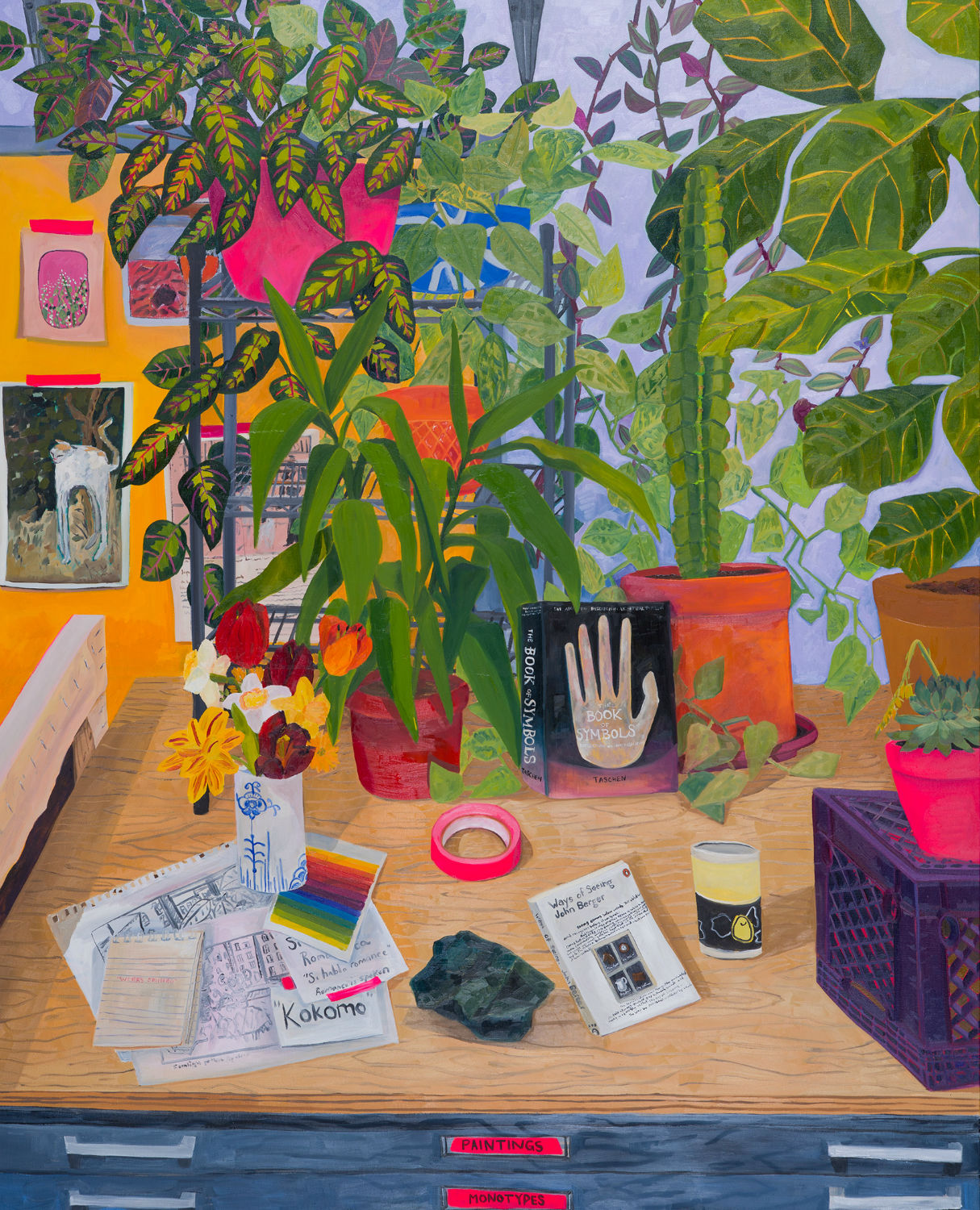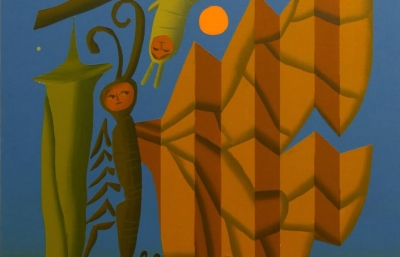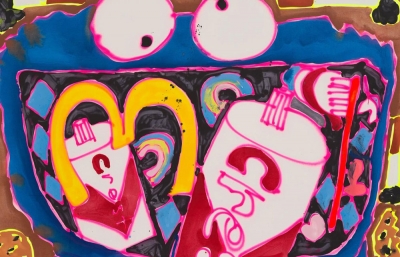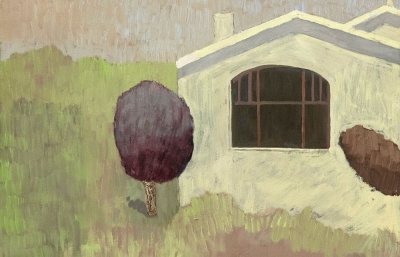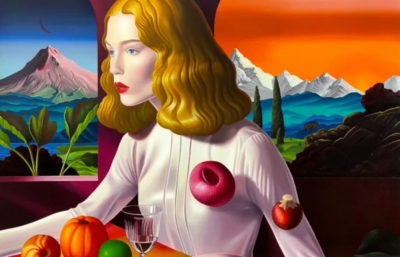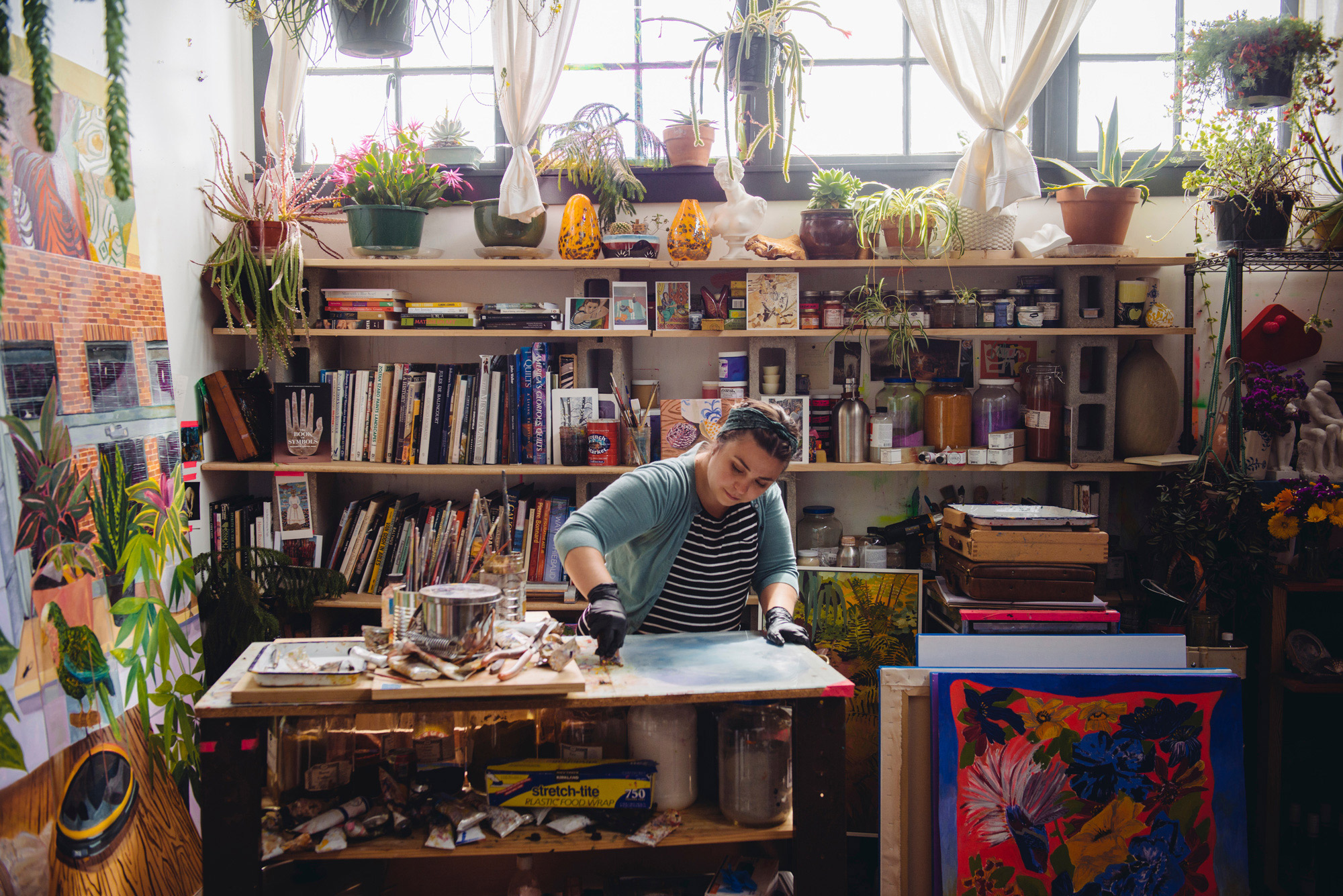
Anna Valdez
Everyday Exceptionality
Interview by Kristin Farr // Portrait by Shaun Roberts
Think about every item you choose to surround yourself with and what it really says about your identity. Think about how often you see these things, or maybe you don’t see them, because they’ve evaporated into a daily visual template that becomes invisible over time. What do these seemingly mundane objects represent, and what story will they tell in the future? These are some of the questions Anna Valdez is exploring through paint and a rotating cast of meaningful everyday objects.
Kristin Farr: Tell me about all your creative work outside of painting.
Anna Valdez: I am an active gardener, which connects to my work in that I grow all of the flowers that end up in my paintings. I cook, bake and ferment and have recently taken up beekeeping. There is something about watching things develop through various phases that interests me.
I read that you were on an archeological dig when you decided to drop the shovels and paint instead.
I remember the transition from one focus to the other was much slower and gradual. But, through data keeping and mapping out archaeological sites, I realized how much I loved to document environments and how this information was used to reconstruct a history and narrative of a forgotten culture. I don’t think what I am doing now is that different from what I was doing then, except It’s being told through a first person narrative versus someone removed from the event who is trying to piece together history. I’m essentially piecing together my own history through painting.
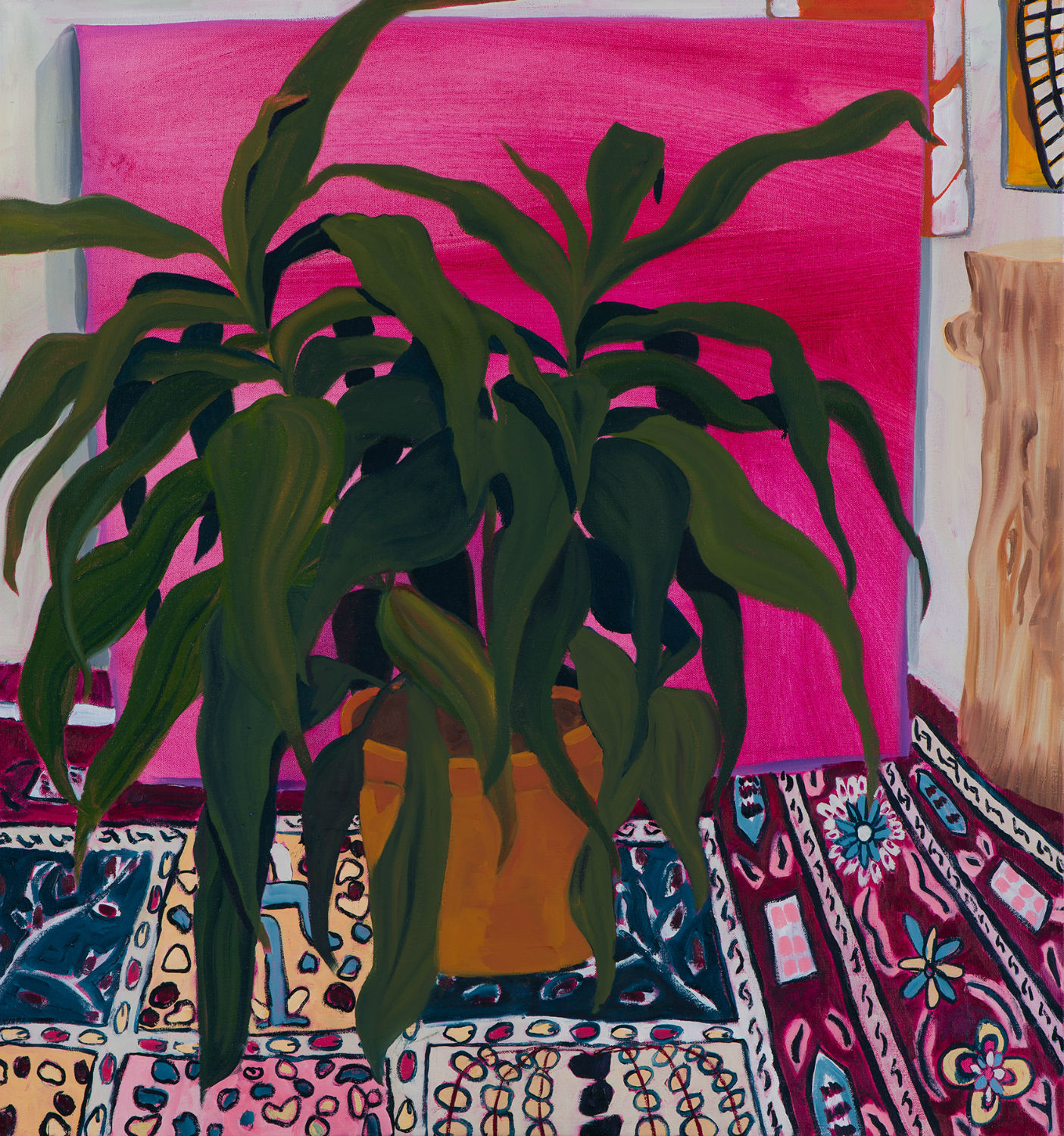
When did you start painting scenes full of plants and textiles? Have you always drawn your surroundings?
Like many artists, I’m probably a bit of a hedonist. Many of the things I find interest in and surround myself with evoke a certain amount of visual pleasure, which makes it easy to focus and find interesting relationships between the objects within my environment. I have constantly had plants around me, as I grew up gardening with my folks. Plants have always been an association with home. My mother is a quilter, so textiles and tapestries are also a connection to home. Both plants and textiles have the ability to take many forms, so they are used as a way of creating movement in my paintings. My reasons for using plants and textiles have definitely developed organically, and with each painting, I find a new way of seeing and handling the space through the movement of these features.
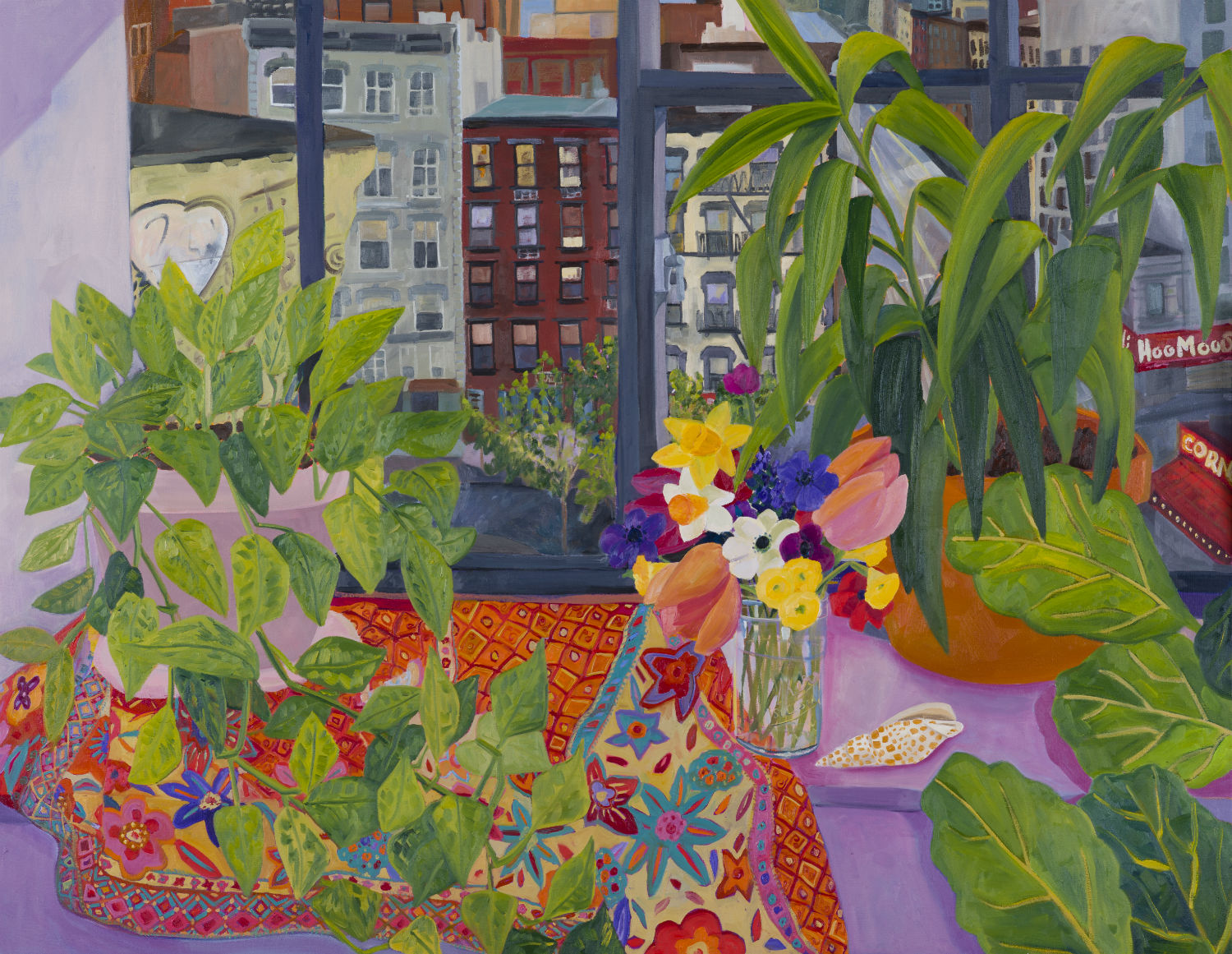
Do you stage the scenes?
It’s definitely a combination of arranged and found moments. My studio is so full of objects, plants, books, records, sculptures and textiles, I find still life paintings everywhere I look. They’re just sitting there, waiting to be recorded. When I have observed something that makes an interesting relationship from one object to another, I will isolate it and make sure that I can see it from a specific vantage point. Even the found still lifes eventually become embellished with new items, or I will change the color or tone of something to fit within the reality I am creating. I like to approach my paintings with a certain amount of flexibility.
Your space is so full but it all seems very intentional. Are you obsessive about it?
I’m not a super tidy person, nor incredibly organized. My studio is pretty packed, and at times, I feel like I’m bursting at the seams; but for the most part, the space provides me with a lot of information to draw from. There is intentionality to the organization of my studio and it changes regularly based off what it is I am painting. Each corner of my studio is usually arranged in a still life setup that changes as soon as I am ready to move on to the next piece. I also tend to rearrange the space to allow for maximum exposure to light for my plants. I would describe my studio as constantly in flux.
Do you mostly collect things to have them as source material, or do you just have them around anyway, and they end up in your work?
I collect fabrics, plants and objects because I like to be surrounded by them. At this point, it could be a little of both because whenever I come across something interesting, I might think to purchase it for a painting, which is usually a plant or a textile. But, for the most part, many of the objects that show up in my work are present because I have found something interesting about them, whether through a narrative perspective or just a visual interest. Nothing with me tends to be specific in terms of certainty. The thing I love most about painting is the ability to rework concepts and take an idea from one piece and continue working in into another. I think this can be said for how I curate my environment in general.
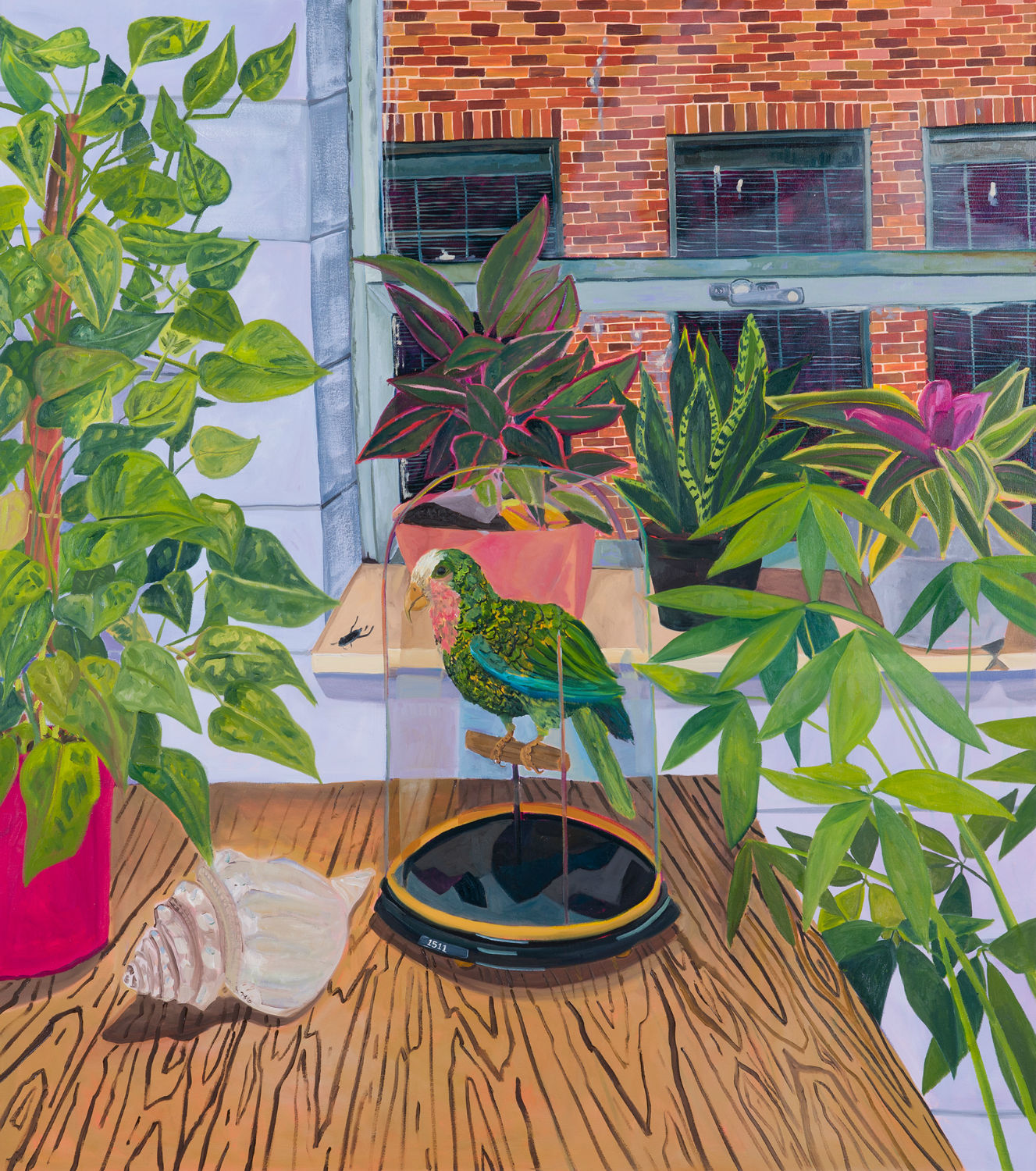
Describe some of the specific meaning or personal narratives attached to some of the objects you often paint, like a coffee can.
I do have recurring objects in my paintings. Some of the repetition is there because, while making one painting, I find other interesting things to explore with the same object. Other times, the repetition is specific to a reference. In the case of the coffee can, I am placing a reference to ritual in my work. While I do choose coffee cans that are visually interesting, they have a specific narrative meaning for me. I don’t want to say too much because I also want people to project their own associations onto things, but for me it’s very much about how those objects function in my daily life.
In some grad programs, artists study “Thing Theory.” Is that something you’ve explored?
The “thingness of things” is a concept I have probably explored informally. While studying archaeology, we would literally reconstruct a society through their objects, diet, architecture and environment, basically the things they left behind. It’s a concept that has shaped my lens in how I think of what we choose and have access to as individuals that gives clues to who we are and how we identify. I’m a bit more casual about it in the way that there isn’t a ton of intention behind the human relationship to objects, other than establishing my own personal narrative that shows up naturally throughout my work. Most of the time, I just try to be in the moment and listen to what it is I need to learn at that specific time. I believe when we are ready to accept things, they have a way of unveiling themselves to us. The functionality of objects is certainly something I keep in mind when creating compositions, but I am not in my studio thinking about things so intensely. Mostly they are used as visual clues to a cultural language.
How does painting help you study culture in the same way you would as an anthropologist?
Painting for me is not just about creating an aesthetically pleasing picture. It’s also about critical thinking. There is a lot of communication and connection that can be achieved through a painting, concepts I am striving towards in my work. Art reflects the cultural zeitgeist of its era as well as the geography in which it was created. Sometimes it’s difficult to notice these things in real time, but in order to read and relate to a specific work of art, you probably share a similar language and experience which helps you understand that particular piece. We can see this when we scan through art history books or step into a museum. Why do specific works serve as ambassadors to their era in history? What makes that work worthy of preservation and reproduction? Throughout my explorations of what makes a good painting, I am constantly asking myself these questions. Through social media, I feel like we are moving back into a more visual language versus a written one. It’s a really exciting time to be a painter because we have more people than ever participating in our dialogue and cultural commentary.
What kind of work did you make in art school?
Like most students, I started by attempting to make paintings similar to my professors’ work or whatever I had exposure to up to that point. There is a real process to learning what you want to paint about. It’s similar to the growing process and development of one’s own identity. This growth occurs when you become confident in who you are and allow yourself permission to paint whatever it is that genuinely interests you.
Tell me about your process and materials.
In terms of my surface preparation, I assemble and stretch my own canvases. I paint at a large scale, so it’s more economical this way. I buy rolls of unprimed canvas, mainly in bulk, and then gesso and prep the surface. Sometimes I will paint on Masonite panels or paper that has been primed for oil, or even on cardboard. I’m not too particular about the surface for my sketches, but for more developed ideas, I paint mostly on stretched canvas. I mix my own colors and sometimes I even make my own oil paint from scratch if I have the time. I use oil paint because I find it to be much more forgiving and workable. I love how acrylic can dry pretty fast and I have recently started to do many of my underpaintings in acrylic, but the majority of the worked painting is all in oil. I think of the difference between spreading plastic and butter. Painting with fat just feels so much better than painting with plastic.

What would you hope someone discovering your work in the next century would think about it?
I would like people to find a sense of humor and a bit of play in my work. I guess I would hope those things would still be relevant in the future?
Do you consider your work to be diaristic self portraiture? And what kind of rituals do you have in the studio?
I would consider my work to serve as a diary to a certain degree. I am not recording or exposing anything incredibly intimate, maybe I would say it’s more like taking notes about my daily observations. But they are certainly self-portraits and autobiographical as they deal specifically with me and paint a pretty accurate picture of my surroundings and interests. I have learned a lot about what sticks out in my mind through painting, how I seem to pay particular attention to details that are sometimes very trivial but hold meaning in being present in a moment. The major studio ritual I have is watering my plants and making sure they are all healthy and growing. I also love to brew a cup of coffee or tea, set my music to the right playlist and rearrange my space.
Are some of the paintings of memories you want to preserve, like Picnic? Was that scene a casual occurrance?
Some of my paintings are memories that I want to document, but for the most part, they tend to be more like an idealized memory of something. Picnic is a scene that is incredibly familiar to me and it’s a moment that I continually experience in different versions. That painting wasn’t so much about the memory as it was using a memory to create a still life setup outside. I had noticed when drawing outside that my paintings focused on the landscape, whereas when painting inside, they were about the domestic. This was an attempt to merge those two practices as one concept.
Tell me about your recent show at Hashimoto Contemporary.
It was called Works Sighted. The majority of my recent paintings have been exploring themes of references and relationships. This show is about the references in my immediate environment and the exploration of observation. In my attempt to learn how to see as well as develop my language in painting, I am thinking about the studio as a library of personal history and interests and how those objects and collections relate to my art history lineage.
You are so prolific, and I wonder if you ever have to make yourself slow down?
I wish I could make myself speed up! I feel like I am a very slow painter and that I take my time doing things.I learn so much throughout the process of making the painting, so I am content to move slowly during my practice.
When’s your next show?
I have a solo show at Parts Gallery in Toronto this October.
annavaldez.com
